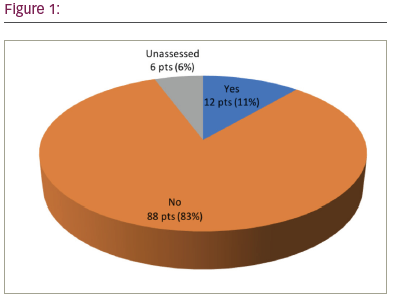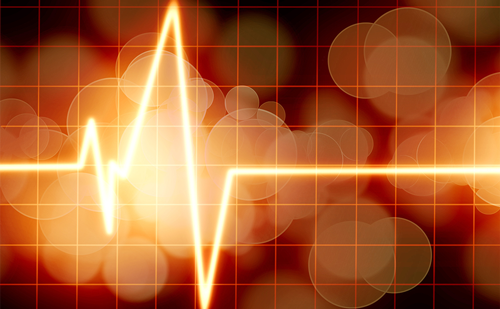Introduction: COVID-19 (C19) is a novel coronavirus characterised as a severe acute respiratory syndrome. The UK government advised the cancellation of elective procedures in March 2020 to reduce virus transmission and to increase intensive care capacity. Several risk factors, including cardiovascular disease (CVD), have been shown to increase vulnerability to C19. In light of new guidelines, we developed a C19 protocol where only emergency and clinically urgent cardiac rhythm management (CRM) procedures were performed and government guidance for PPE was followed. For procedures which posed a high risk of aerosolization i.e. general anaesthetic or high risk of CPR; respirators, visors, appropriate donning and doffing were utilized. This is not the case for the majority of arrhythmia procedures. We audited the prevalence of C19 symptoms in patients post discharge, hypothesizing that the patient’s exposure to the virus would not increase, enabling us to carry out procedures safely.
Methods: We retrospectively audited patients admitted for emergency and urgent procedures to the arrhythmia Cath lab from 23rd March 2020 to 24th April 2020. Patients were contacted post-discharge via telephone and completed a survey with twenty-six close-ended questions, ten of which specifically addressed symptoms which show correlation to
the virus.
Results: Our sample population consisted of 106 patients. 100 patients completed the survey (94.3%), out of which 65 of the patients (65%) were male. Mean age was 68 ± 16 years, mean BMI was 28.43 ± 6.15 kg/m2, 62% of the patients were white, 10% were black, 5% were Indian/Asian and 23% were characterised as other. 90 patients underwent device procedures (90%) and 10 patients had EP procedures (10%). Average number of co-morbidities for the whole population was 1.92. After assessing patients’ medical history, we found 17% of patients had COPD or other pulmonary condition, 12% had diabetes mellitus, 8% had chronic kidney disease, 6% of the patients were prescribed immunosuppressants and 1% had chronic liver disease, An age value of >70 years represented a moderate risk of C19 which applies to 51% of patients. Underlying CVD included coronary artery disease, inherited heart disease, cardiomyopathies, valvular insufficiency/repair, electrophysiological abnormalities and congestive heart failure, which affected 49% of the patients. As categorised via NHS UK, overall, 56% of our cohort had high risk factors and 44% had moderate risk factors. The results revealed that 88 patients (83%) had no C19 related symptoms post-discharge. 12 patients (11%) had mild C19 related symptoms; sneezing, wheezing, nasal discharge, hoarseness, mild cough and mild SOB (Figure 1). No patients experienced fever. Overall, 5 patients were tested for C19, all with negative results. One patient was re-admitted to hospital post discharge due to deteriorating HF and one patient died which was unrelated to C19.
Conclusion: Of our cohort of at-risk patients, 92% had >1 risk factor, who underwent procedures in the cath lab, with only 11% experiencing mild potential C19 symptoms. No transmissions were confirmed with virus tests. However, this audit has limitations; the questionnaire was unverified to expedite the results during the pandemic, only 5 patients were tested post procedure and C19 status was unknown pre-procedure. Despite the limitations, this audit shows that whilst complying to the national guidance for PPE C19 transmission is manageable.








